18. Tangerine (2015) dir. Sean Baker
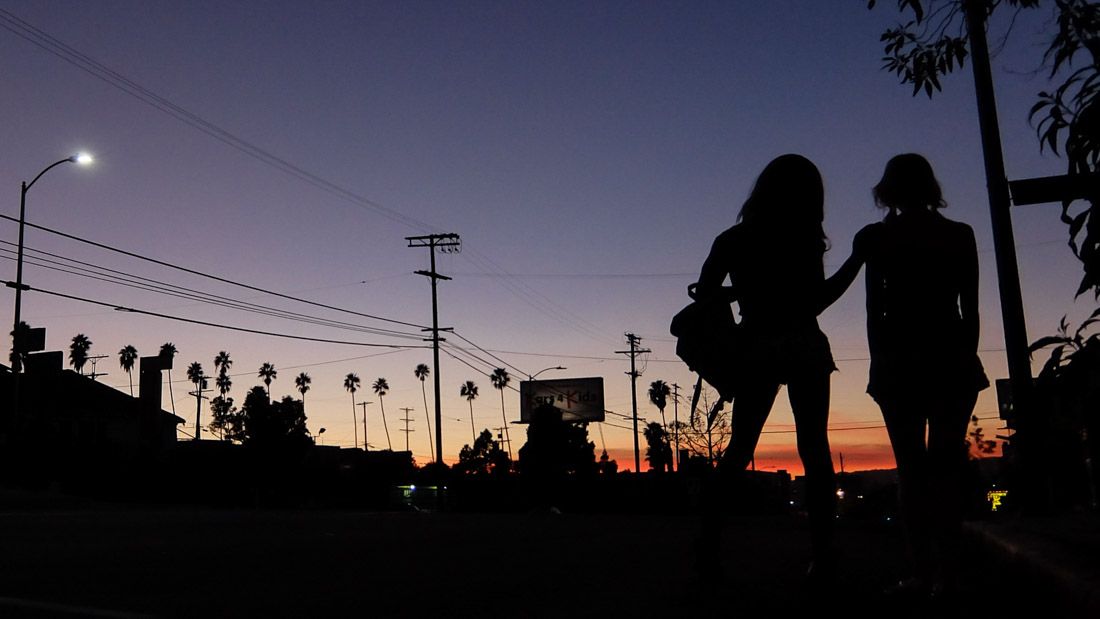
Open on 50s style Hollywood titling on a scratched tangerine background. We’re at Donut Time, an establishment where the Sunset Boulevard pimps go about their business and sex workers congregate, much to the annoyance of the staff. But this isn’t about Donut Time, this is about Sin-Dee Rella (Kitana Kiki Rodriguez) and Alexandra (Mya Taylor), two transgender women who are street sex workers.
All immediately comes crushing down for Sin-dee who learns that her pimp boyfriend, Chester (James Ransone) has been cheating on her while she’s been in jail for the past twenty-eight days. With a white, cisgender “real fish” of a woman, no less- which really hits a nerve for Sin.
Thus, revealing the film’s impetus; confront Chester and find slash wreck the girl who Sin-Dee feels stole her man. Using a blush brush as a make-shift weapon of disbelief and rage, Sin-Dee is fuelled by vengeance and anger. Alexandra, on the other hand, is frankly over it as soon as she accidentally slips the truth (a.k.a. the T, honey) and tries to dampen the dramatic fire that is her best friend – to no avail. Her efforts are mainly placed on passing out flyers amongst her friends and passers-by, advertising her live singing show later on that evening. As well as trying to get paid for her labours on johns.
We also follow Razmik (Karren Karagulian) a closeted queer, Armenian cab driver who is all-too familiar with the Santa Monica boulevard trans hustle scene. A customer of Alexandra’s and crushing on Sin-Dee Rella, he keeps this identity from his (initially) unassuming family, who we meet in an amazingly realistic scene of a condensed, multigenerational table setup focused on food and coffee that is familiar to most Europeans, especially on Christmas Eve.
Set in real-time, the sun slowly sets throughout the course of the film, illuminating a beautifully beaming tangerine hue (after which the film was entitled) and brightening neons into the night. Shot exclusively on three Apple iPhone 5S smartphones, along with the Moondog Labs’ anamorphic cip on lens and eight dollar app FiLMiC Pro, as well as Steadicam Smoothee Mounts. Impressively demonstrating the accessibility and quality of these materials, Baker tracks the girls strutting along the sun-soaked sidewalks, mixed to the dramatic electronic beats of the soundtrack.
(Bonus: Alexandra performs an acapella rendition of Doris Day’s Toyland in front of red velvet curtains. A beautiful and sad parallel to Isabella Rossellini in Lynch’s Blue Velvet).
19. Laurence Anyways (2012) dir. Xavier Dolan
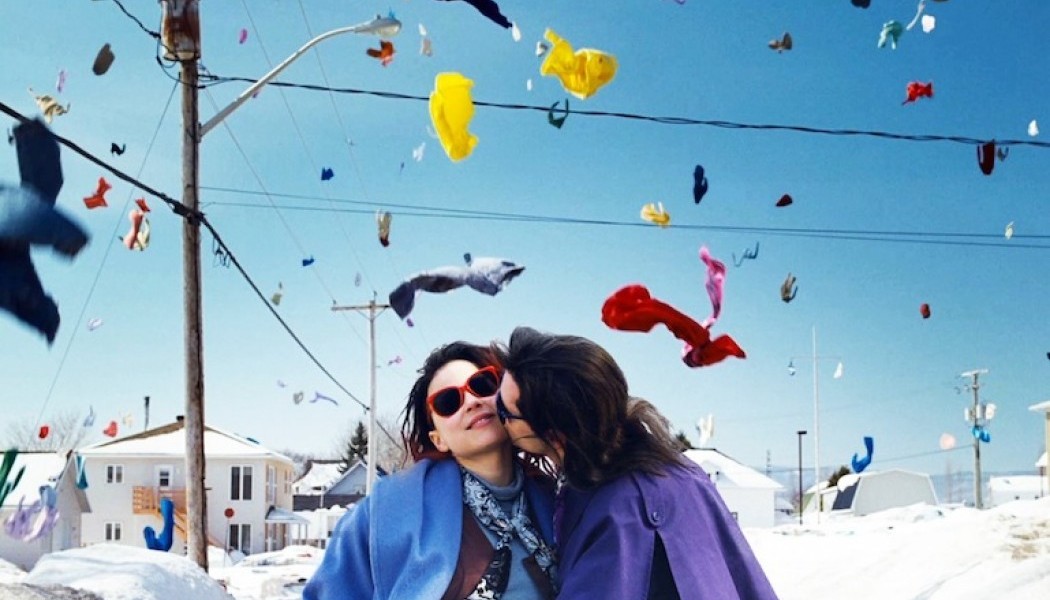
“What are you looking for Laurence Alia?”
“I’m looking for a person who understands my language and speaks it. A person who, without being a pariah, will question not only the rights and the value of the marginalised, but also those of the people who claim to be normal.”
Xavier Dolan’s visually stunning Québécois romantic drama explores the seemingly hopeless, tumultuous love story between Laurence (Melvil Pupaud), a thirty-year-old literature teacher and Fred (the ever-expressive Suzanne Clément), a passionate new-wave woman with dyed crimson hair and a rebellious attitude.
At first, they appear to be an edgy straight couple – smoking weed in the back of their car and making lists of things that minimise their pleasures (e.g. parents who paint their kids’ rooms in pastel colours, dark chocolate). It’s 1989 and they live together in an apartment where their royal blue bedroom is decorated by a centrally-placed Mona Lisa replication. But soon, Laurence reveals a truth he has been burying for all his life, feeling that he is stealing the life of the woman he was meant to be, he tells Fred and his mother that: she’s a transgender woman.
Fred doesn’t take the news well at first, assuming that that means her partner is gay, but Laurence reassures her that “It’s not that I like men. I’m just not made to be one. It’s different.” Challenging the misconception that all trans people are gay, Dolan also analyses the response to such a declaration from other characters’ perspectives; Fred initially feels that everything they’re been through together much be reinterpreted through the lens of the truth she now knows.
Fred’s sister, Stéfie (the beautiful Monia Chokri) rolls her eyes and is seemingly hostile about it. And Laurence’s mother (Nathalie Baye) smokes her maternal anxieties away. But soon enough, Fred accepts Laurence as the woman she is and tries to help her through the transition. She buys her wigs, roots her bravery, and stands by her partner despite judgmental looks and tough times. We feel strangers’ stares at Laurence as she starts to put on make-up and wear women’s clothes. The intrigue, the judgement and the curiosity behind every person’s eyes.
Despite being an award-winning novelist, the parents of the school mange to create enough pressure for the school to fire her based on her orientation. Things start to go downhill again when Fred becomes increasingly depressed with her circumstances and soon- they split again. The film’s time takes place over a decade, with special attention given to the 80’s attire and soundtrack (which include timely hits from Depoche Mode, Duran Duran, The Cure and Visage’s Fade to Grey).
We see the couple’s on-and-off relationship being tried and tested at a time when transsexuality was labelled as a mental disorder (literally, the American Psychiatric Association listed it as ‘gender identity disorder’ in the DSM in 1980; thankfully declassified as of 2013, the term has been replaced with ‘gender dysphoria’ to represent the inner psychological turmoil faced by so many and underscore that transsexuality is indeed not a disease nor a disorder).
On their kitchen table, there’s a print of the Isle of Black, a peninsula in the Scottish Highlands which the couple romanticise and dream about going to. Similar to Happy Together’s treatment of the Iguazu waterfalls, the location serves as a leitmotif throughout the film, symbolising their ever-dampening dreams of a future together.
Heavily influenced by Wong Kar-wai, Dolan manipulates film speed, utilises slower-rate frames, and matches music to action in a similar way one would see in a music video. Together with these techniques, his fascination with moving fabrics, torrents of flooding water, and darkroom reds make for some truly beautiful (and often pleasingly symmetrical) sequences.
The film was awarded the Queer Palm at the Cannes Film Festival, with Clément also winning Un Certain Regard – Best Actress.
20. Weekend (2011) dir. Andrew Haigh
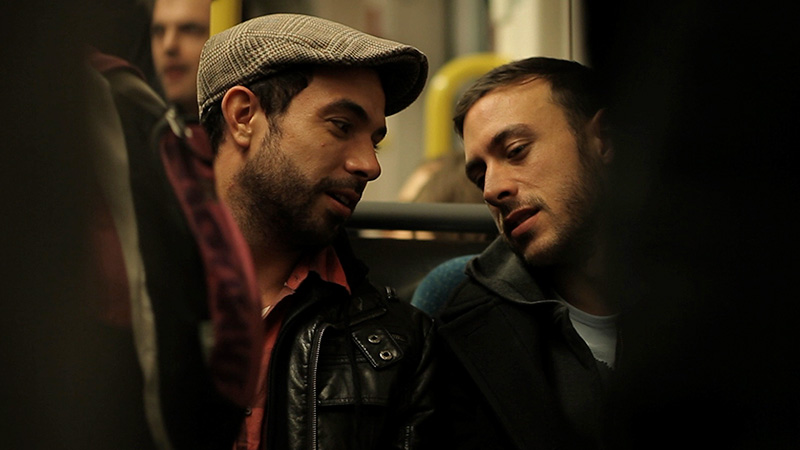
It’s an October Friday night in Nottingham and our protagonist, Russell (Tom Cullen), is in a gay night club- all alone and looking for a hook-up. He lonesomely drinks and dances, until he makes brief, but loaded eye contact with a handsome stranger. He follows him to the bathroom, but the guy ignores him. Leading Russel to make out with some other dude. Cut to the morning and we’re back at his place. Russell is in the middle of making some tea for himself and his overnight guest: Glen (Chris New), a student artist, the first stranger.
Shot in 16 days with a Canon 5D Mark II DSLR camera, the romance of this prolonged one-night-stand turns into a soulful discovery of both personal and social identities. Calling upon a promise made last night, Glen asks Russell to narrate his perspective of the events leading up them sleeping together, as well as the event itself – and let him record all of it for an art project he’s doing. Both reveal their intentions and individual mental processes that led to them hanging out this morning. Sipping tea and spilling it. A new level of bare truth is immediately achieved, lending their interest in each other the rapid potential to grow.
Conversations drive the film. Glen discusses his art’s purpose of understanding and bridging the different selves each person has. Different social situations compel individuals to attach themselves to specific self-identities activated by the context of the situation. This leads to a construction of a dichotomised view of their idea self (what people want to be) and their limited self (how others see them).
Glen also throws in a seemingly light anecdote about masturbating to a shaking VHS image of a nude Rupert Graves in A Room with a View (1985), that turns into a dark exposition tale that builds depth. Perhaps the most astounding aspect of this film is their synchronicity of recording their sexual histories. Glen through tape recording, Russell through text.
Reminiscent of the much understated earlier gay British film Nighthawks (1978), the film’s treatment of night-club hook-ups in a way that is not gratuitous for the sake of exploitation purposes benefits itself by introducing two characters who are successfully (and quickly) developed. The couple keep meeting up throughout the weekend, before Glen departs from England to Portland, Oregen for two years. Hit the timer, their limited selves have limited time.
(Bonus: Andrew Haigh also executive produced and directed the majority of the television show Looking, a gay-themed HBO series starring Jonathan Groff).
21. The Crying Game (1992) dir. Neil Jordan
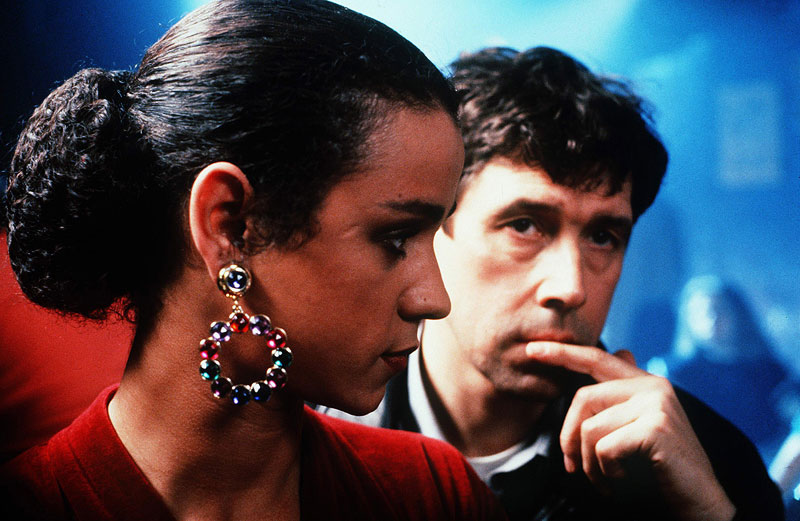
A renowned British classic, The Crying Game offers a thrilling original take of a noir-esque melodrama by rooting it in the backdrop of ‘The Troubles’, a.k.a. the Northern Ireland conflict, specifically at the time of the deployment of British troops. IRA members Maguire (Adrian Dunbar), Jude (Miranda Richardson) and provisional IRA volunteer Fergus (Stephen Rea) plot and kidnap Jody (Forest Whitaker), a British soldier.
Jody is taken hostage in exchange for the release of imprisoned IRA senior members, and if they haven’t within three days- they’ll kill him. Kept in a small shack, hands and feet tied together and bag over his head, Jody seeks the kindness of sweet-sounding Fergus to let him breathe without the suffocating bag.
Due to Jody’s sense of humour and his overwhelming sense of pure desperation, Fergus takes it off and allows him to see his face, know his name, and it just builds from there. Over the next three days, Fergus and Jody develop a friendship and have a keen respect for one another despite the whole hostage situation thing.
Potentially a strong case for mutually symbiotic Stockholm’s Syndrome (and its reverse), the level of affection -especially when compared to the level shown by the other hostiles- is inexplicably powerful enough for Fergus to carry out Jody’s final request before his death; to check up on his girl Dil (Jaye Davison), tell her his last thoughts where all about her. Oh, and to take her to the Metro for a margarita. Fergus looks at an image of Dil. A folded-up picture from the inside of Jody’s wallet, and she’s gorgeous.
When Fergus eventually meets Dil, under the guise of the name ‘Jimmy’ searching for a haircut at her salon, the bleak tone shifts to a sensual undertone- as she massages shampoo into his now trimmed hair they make flirty conversation. Dil’s a nineties femme fatale; with knowing glances, a strong shell and a meek, sad interior- she alluringly dictates and controls their verbal interactions, filling in the gaps of his silence, mainly by using the barman Col (Jim Broadbent), as an intermediator, who plays along with her narrative.
At the Metro, she performs a rendition of Dave Berry’s The Crying Game. Blended blue eyeshadow, lip-gloss and little red disco ball earrings, she adorns a beautiful glittering golden dress. The definition of feminine hand movements, her performance interests Fergus even more, as he stalks her back home. The two soon become romantically involved, and when they are about to finally have sex, we see Dil naked. Of course, marketed as the “secret” in the movie, the fact that Dil is a transgender woman (to be clear- with no operations) shocked many, namely Fergus- who reacts with revulsion, hitting her and immediately throwing up.
The essentiality of Jody, “whose queerness is so removed from most people’s preconceptions that few critics or viewers ever seem to notice the slyly drawn man’s tiered sexuality,” paves the way to challenge assumptions of stereotypes and seeing sexuality as strictly binary, as opposed to a fluid spectrum of attraction. Not only for the viewer, but for Fergus himself. Their relationship, while turbulent, builds as even more drama ensues.
Ernest Hardy also notes that “its box office success ‘helped transform’ independent film from a cult item to a highly profitable market-share”. This suspense 35mm film shot on a shoestring budget ultimately garnered six Oscar nominations (including Best Picture, Best Film Editing, Best Actor (Rea), Best Supporting Actor (Davidson), and Best Director). Jordan also won the Academy Award for Best Original Screenplay.
(Bonus: check out Jordan’s Breakfast on Pluto (2005) – Cillian Murphy plays a transgender female named Kitten who uses Chanel No.5 as a weapon).
(Double Bonus: The film pays respect to Orson Welles’ film noir Mr. Arkadin (1955), by highlighting the fable of the Scorpian and the Frog, which is also featured in the former film).
Literary References:
– Ernest Hardy. 1001 Movies to See Before You Die (2014).
22. Beach Rats (2017) dir. Eliza Hittman
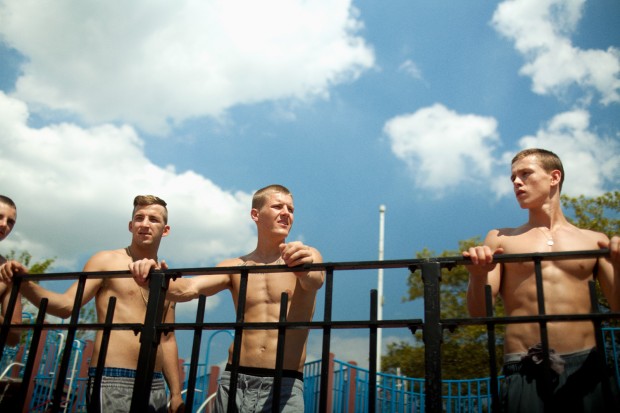
Flash. A nude torso. Flash. An exposed armpit attached to a stretched, muscular bicep. Flash. A shadow-casting blue snapback cap, hiding the face of: Frankie (Harris Dickinson), a nineteen-year-old freckled blondie who spends his nights going to Coney Island, smoking weed and pickpocketing wallets with his thuggish blue-collar friends, avoiding his intensifying familial situation, and chatting with male strangers on the gay webcam site Brooklyn Boys.
We’re on the boardwalk watching fireworks now, colourful pyrotechnic stars fall into the Atlantic. A dark-haired girl turns around, looks at Frankie and asks, “Aren’t they beautiful?”. He responds that they look the same as they ever had for every Friday throughout summer. Her name is Simone (Madeline Weinstein) and she is clearly interested in our protagonist.
After her not-so-subtle prompts, Frankie takes her home. He says his place is a mess and covers her eyes with his hands, guiding her to his basement and shielding her eye sight from seeing his terminally ill father whose sleepily attached to a beeping heart monitoring machine. They’re alone and she starts undressing; revealing her conflicting animal print underwear. He’s more interested in snorting his fathers crushed up – but goes along with it anyway.
However, he soon becomes wary once she removes his underwear. He hides himself, blaming it on being too drugged up to do anything. She tries her best to get him in the mood, but instead gets insulted by Frankie’s mockery of her attempts. Never labelling himself as gay or bisexual even to himself, Frankie tells one of the men he meets at the beach that he doesn’t really know what he likes. But the camerawork tells us all we need to know.
Focusing on the anatomy of the male body, tight close-ups and voyeuristically dark shots of his trysts with the men he meets online, his pent-up internalised homophobia builds and is ultimately externalised with his efforts to continue an aimless relationship with Simone and retain credibility amongst his macho straight friends.
The wondrous 16mm celluloid feel achieved by the quintessential cinematographer Hélène Louvart, who previously worked on Varda’s “The Beaches of Agnes” and Wim Wender’s “Pina”, is made even more impressive considering that director-writer Eliza Hittman’s utilisation of a risky non-traditional lighting set-up with LEDs on hand-held poles- ultimately achieving a delicate darkness that palpitates fear into the murky unknown. Frankie’s world extends to the refracted twinkling neon lights in the bay, but not much further.
Stuck in a place where most people in film go to ‘find themselves’, he lives in a world that is stagnant and is torn between two different identities; being part of the stoned wife-beater tank collective, and cruising for older men to secretly meet and have sex with. Not much of himself is left for his family, whom he avoids revealing too much of himself to.
In an Interview with Sight & Sound, Hittman explains; “Part of my interest in the characters is that they feel out of time. They have haircuts that feel like early 60s or late 50s. So the decision to shoot on 16mm came off wanting to give the entire look of the film an ‘out of time’ quality- because the areas are so isolated.”
The film premiered at the U.S. Dramatic Competition section at the 2017 Sundance Film Festival. Nominated for the Grand Jury Prize, Hittman deservedly took home the Directing Award.
Beach Rats is currently available on Netflix.
Literary References:
– Christina Newland. In the Company of Men. Sight and Sound, 27(12). (December, 2017).
23. The Duke of Burgundy (2014) dir. Peter Strickland
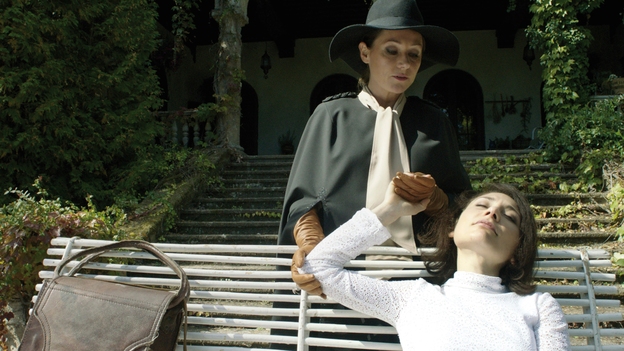
Evelyn (Chiara D’Anna) rings the doorbell. She’s a student studying lepidopterology – a.k.a. the study of moths and butterflies. Cynthia (Sidse Babett Knudsen) opens the door. Her pencil skirt chic outfit automatically exerts dominance over Evelyn’s meek schoolgirl appeal. She’s Evelyn’s teacher slash boss as Evelyn also works as her maid in her home. Everything in this house feels expensive, luxurious.
After a full day of errands, Evelyn is about to go home when Cynthia tells her to rub her feet. By now we know something sexual is going on between them, and that even though it seems like the first time- their familiarity with each other is clear. Cynthia continues to order her around and its apparent that they are in an BDSM set-up, with Cynthia being the dominant, and Evelyn the submissive.
Named after the Hamearis Lucina butterfly, the film’s colour palette matches the creature on which its denominated; sleek browns and yellows. Although, significant attention is paid to Evelyn handwashing Cynthia’s pastel underwear. Beauty found in the soaking material, Strickland focuses on the delicate bubbles bursting and the ideology of collection. That is; careful consideration of the assemblage of items in an effort to enhance its aesthetic form, as seen through the multiple display cases full of hundreds of embalmed, preserved butterflies. All appearing beautiful, but all actually dead. We dive deeper into the narrative.
Evelyn peeks through a keyhole, and watches her mistress undress out of her skirt- emphasising her hemlined stockings. It feels natural, secret, and taboo- but we soon learn that it is all orchestrated. The relationship between the two women is not exactly what it appears to be. All their interactions are scripted and dictated by Evelyn, who seems to be the true dom.
Soon Evelyn’s tastes become more and more extreme, demanding to be kept in a small claustrophobic coffin-like bed, Cynthia begins to falter in her position. She feels abusive and longs for a more conventional relationship with her lover, but continues to go along with it simply because she loves her. She’s a delicate bubble about to burst.
By switching the roles of strength, Strickland provides a point of view rarely seen in these kinds of films. At risk of just being a lesbian version of Fifty Shades of Grey, especially at face-value, the drama leads one to empathise with the role of the dominant partner. A crossbreed of beauty and pain; the practices that these women endure are highlighted by delving into the worries of maintaining a relationship and one’s own morals.
To clarify, Evelyn isn’t the only one who is hurting. The heat of wigs. The tightness of corsets. The restriction of stockings. The discomfort of heels. Claiming to even “need an instruction manual for half of the things” Evelyn buys her. All done in order to make her partner happy.
After a day ends, another cycle of the narrative begins as Cynthia rereads the lines Evelyn prepared, and Evelyn rings to doorbell. “You’re late”, “Did I say you could sit?”, “I’m not happy.” And the erotic roleplaying ensues.
Strickland, who is especially influenced by Italian Giallo films (as noted in his 2012 Berberian Sound Studio) may have been particularly inspired by Corrado Farina’s The Devil Witch (‘Baga Yaga’, 1973), which also lends itself to the themes of lesbianism and BDSM.
It is also of interest to note that the coffin-like conditions of Evelyn’s birthday present bring to mind the masses of horror exploitation films built on the trope of lesbian vampires, such as Jesús Franco’s Vampyrus Lesbos (1971), Harry Kümel’s Daughters of Darkness (1971), and Tony Scott’s The Hunger (1983) – the latter featuring a love triangle between bisexual Catherine Deneuve, David Bowie and Susan Sarandon.
24. God’s Own Country (2017) dir. Francis Lee

The wind whistles, the fire crackles, and his belt unbuckles. Nature and attraction interlink to form the heart and soul of this film- the harsh brutality of the wild matched with the compelling allure of the wild earthy elements which surround us.
We’re on a Yorkshire farm run by the Saxby family; there’s the wonderfully curt grandmother Deidre (Gemma Jones), the constantly irked father, Martin (Ian Hart), who previously suffered from a stroke, making him unable to cope with much of the day-to-day running of the farm, leaving the responsibility to: Johnny (Josh O’Connor), his frustratingly bored son who escapes his unfulfilled life in the English country by finding solace in binge-drinking (to the point of complete inebriation) and having meaningless sex with random men in public restrooms and the back of his metallic truck used to transport cattle. The Saxby family hires Gheorghe (Alec Secareanu), a Romanian migrant worker who was the only one to apply for the job, for extra help during lambing season.
The two don’t exactly get along at first, especially in regards to conversation, with Johnny derogatorily name calling him ‘gypsy’, which Gheorghe insists he stops doing until the fifth time Johnny says it and then: Gheorghe thrashes him onto the grass, clutching his face with his rough hands and cold stare. Confronting his verbal abuse both physically and carnally- overpowering and surprising Johnny, leaving him shallowly gasping for air.
Nose to nose, Skin on skin, erotic positioning convey the underlying sexual attraction and escalating tension between them which shall inevitably overflow and reach a crescendo- because what else is camping alone near the animals is for? The two spend more and more time together; working on the farm, taking care of the sheep and cattle. They sleep next to each other, sleeping bag near sleeping bag- neither actually sleeping, both silently awake and hypersensitive to each other’s presence. They eat cup noodles, drink tea and smoke shared cigarettes by flickering, smoky firelight (reminiscent of the camp-fire scene in My Own Private Idaho) that casts shadows against everything but their controlled expressions.
The only electricity around them is what pulsates between them. The two barely speak or acknowledge the evident tautness, instead we focus on their earthly connections- the silty mud, the running streams, the godly power of hay; highlight the harsh feel of the country that mirrors the jagged relationship between the characters. Especially considering the thematic similarities with Ang Lee’s 2005 mainstream-success Brokeback Mountain (another LGBTQ+ which is also suggested), God’s Own Country finds its own success by not romanticising romantic relationships, but instead simply presenting them as they are- naturally.
Hence, the priority of focusing on the British countryside and farm life, an environment that doesn’t allow you to shy away from the harsh and bloody parts of life; whether it be birth, death, or saliva-suckled open wounds.
25. The Wound (2017) dir. John Trengove
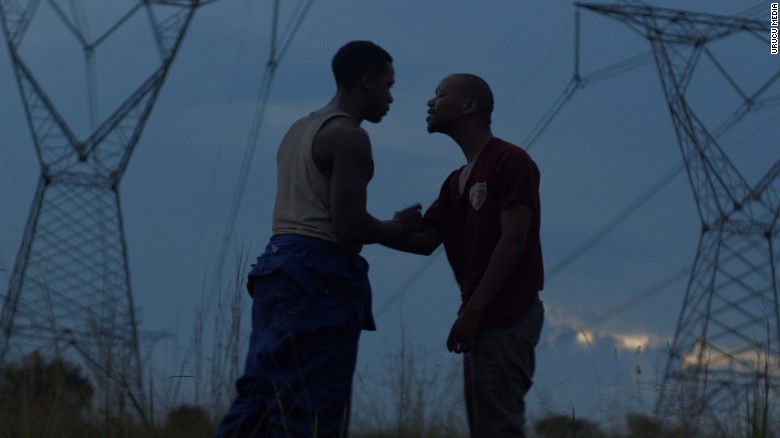
This iconoclastic South African drama focuses on the Xhosa coming-of-age initiation ritual of Ukwaluka, aimed at teaching, guiding, and preparing young males for the responsibility of manhood. Necessary to be regarded as a man, if these late adolescent initiates do not undergo the initiation, they will forever be seen as boys, irrespective of their age, and are not allowed to participate in tribal meetings.
The major part of the initiation is circumcision, after which they must spend around three weeks with their mentors until they officially become men. The practice has increasingly gained criticism on the basis of health risks, issues of safety, and relevance- however, the custom still remains a cornerstone of traditional Xhosa culture and considered the “defining event of a man’s life.” Members who have been initiated are forbidden to speak openly about Ukwaluka, although Nelson Mandela famously broke the secrecy taboo in his 1994 autobiography Long Walk to Freedom.
We follow the quiet Xolani a.k.a ‘X’ (the hypnotically vulnerable singer-turned-first-time actor Nakhane Touré), as he travels to the mountains of Eastern Cape for his community’s annual initiation ceremony. He’s a mentor, helping nurse and guide the teenage boys throughout the ritual. X is asked by the father of a new initiate, Kwanda (Niza Jay Ncoyini) to be firm on his spoilt son, who silently rebels against the custom by doubting their strict perceptions of manhood. After the circumcision, Kwanda trembles with the intense pain from his wound, which must be dressed and redressed by X.
Another mentor, Vija (Bongile Mantsai), whose threatening masculinity scares his initiates, finally meets up with his friend X. I say ‘friend’, Vija says ‘friend’, but Xolani can barely stand the term; subtly wincing at its minimisation of the physical relationship they secretly have. Detracting his soulful love for him. X’s kinship with Vija is picked up upon by Kwanda, who also reveals that he is gay. The three queer characters individually struggle with repression, toxicity, and violence against the backdrop of secluded picturesque waterfalls, each trying to be their own kind of man.
The film’s title in its original isiXhosa, that is; Inxeba, translates into English as the ‘Insiders’, referring to the men who have successfully undergone Ukwaluka, as well as perhaps specifically grouping the ‘inside’ homosexual identities of the three main characters. Inspired by Thando Mgqolozana’s 2009 novel “A Man Who is Not a Man”, who also went on to co-write the film with debuting director John Trengove, the unique visions of a community never seen in cinema has been described in the official press kit as “leading a new wave of African cinema, it’s equal parts coming-of-age story, love story, and intense psychological thriller.” Applauded for dealing with the taboo issues of sexuality and addressing the generational divide in the context of traditional customs, the film specifically triumphs in its portrayal of questioning the increasingly archaic idea of hypermasculinity.
Trengrove has stated;
“The Wound was born out of a desire to push back against clichéd stereotypes of black masculinity perpetuate inside and outside of African cinema. As a white man, representing marginalized black realities that are not my own is, of course, complicated. Even highly problematic. It was important to me that the story mirrors this problem. The character of Kwanda is an outsider to the traditional world who expresses more or less my own ideas about human rights and individual freedom. He’s also the problem. His preconceptions create jeopardy for others who have much more to lose than him… In writing The Wound, inspiration came, unexpectedly, from President Rodert Mugabi. Statements that he and other African leaders have made since the early ‘90s imply that homosexuality is a symptom of western decadence that threatens ‘traditional’ culture. And so we thought: ‘okay, let’s use that idea. Let’s imagine ‘gayness’ as some kind of virus that penetrates and threatens a patriarchal organisms, and let’s see how that organism responds to being penetrated.” (Press Kit, 2017).
Inxeba was screened in the World Cinema Dramatic Competition at the 2017 Sundance Film Festival, as well as at the Panorama section at Berlinale. Its release in South Africa met with heavy controversy, having been accused of cultural insensitivity as it portrays rituals which are meant to be secret (even though, the film adaptation of Mandela’s autobiography did not receive the same criticism), as well as being subject to harsh, intimidating protests and vandalism. So much so that both cast and crew received death threats and were forced to go into hiding.
Currently the film is in the midst of overturning the Film and Publication Board (FPB) Appeal Tribunal’s pornography rating of X18, a rating reserved for hardcore porn of which the film shows none. Initially rated as 16LS, and later reclassified as such after complaints by the Congress of Traditional Leaders of South Africa and other Christian Organisations, the classifications caused uproar amongst fans of the film as well as the FPB classifiers themselves see this as unlawful censorship based on homophobia.
These factors led to the cancellation of the film screenings countrywide.
Honourable Mentions:
– Je, tu, il, elle (1974) dir. Chantal Akerman
– The Killing of Sister George (1968) dir. Robert Aldich
– Mädchen in Uniform (1931) dir. Leontine Sagan
– Pariah (2011) dir. Dee Rees
– Beautiful Thing (1996) dir. Hattie MacDonald
– Beau Travail (1999) dir. Claire Denis
– Un chant d’amour (1950) dir. Jean Genet
– A Fantastic Woman (2017) dir. Sebastián Lelio
– Farewell My Concubine (1993) dir. Chen Kaige
– Another Way / Egymásra nézve (1982) dir. Károly Makk
– Almost every Pedro Almodovar film
– Any Derek Jarman film
(The purposeful exclusion of gay Icon John Water’s filmography was based on the list’s title, that is; the word, “beautiful” which his work relishes in its opposition).
Author Bio: Susannah Farrugia is a twenty-one-year-old Maltese psychology graduate student currently finishing her masters in the UK in Media Psychology. Her life measured in films and television shows, she hopes to eventually extend her critical knowledge of film to practical filmmaking and screenwriting. Follow her film-based illustrations on Instagram @cinema.ink.